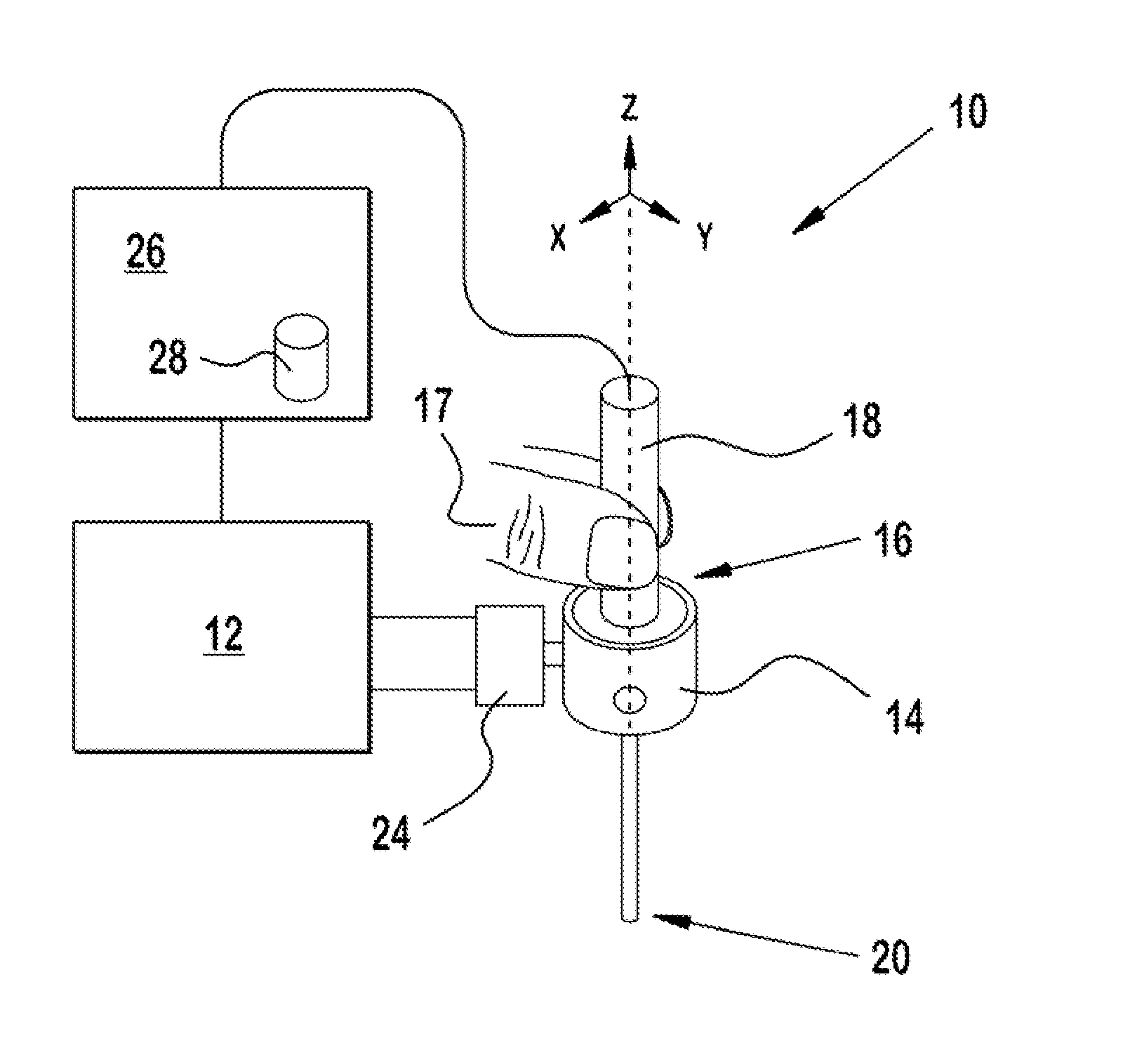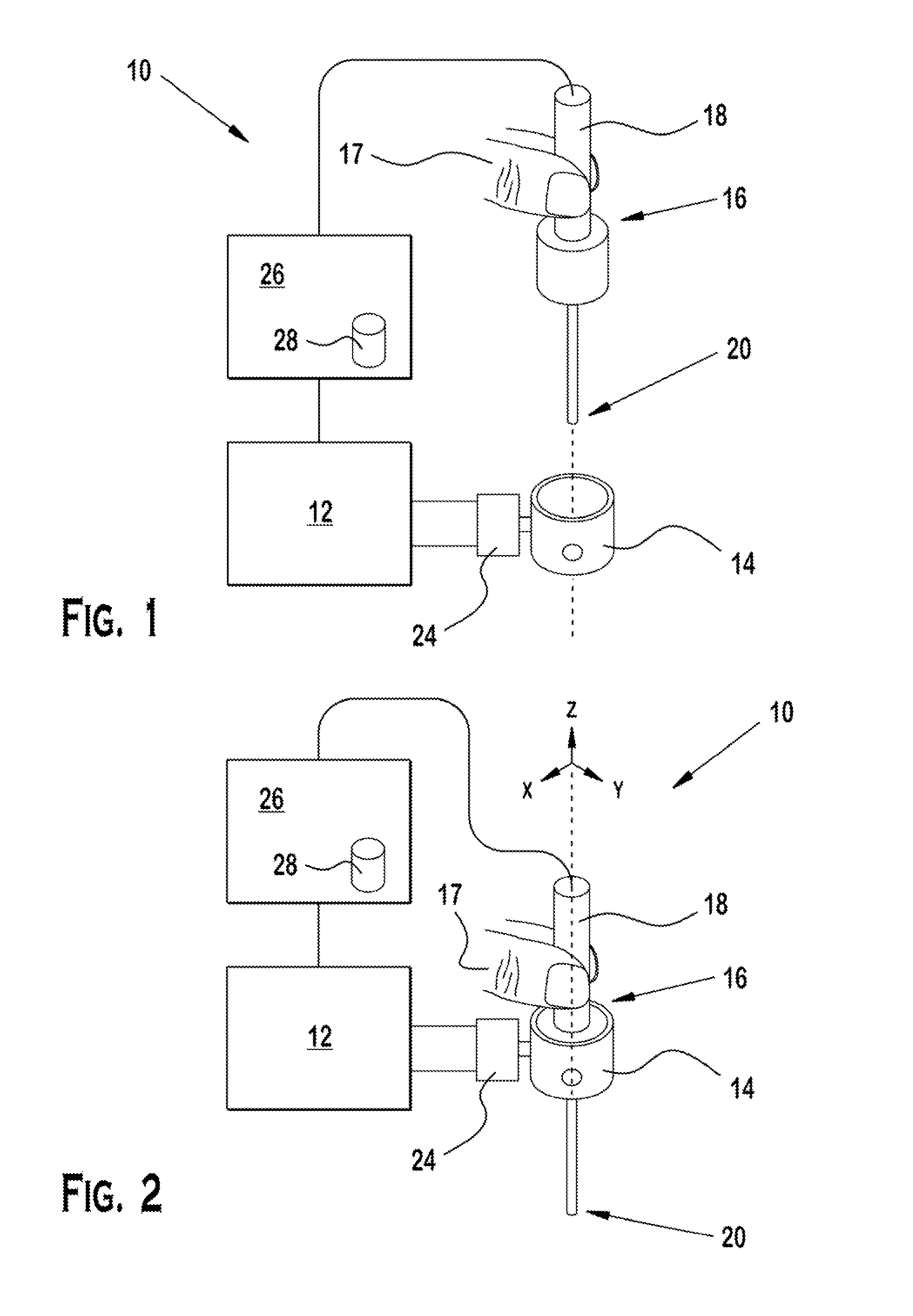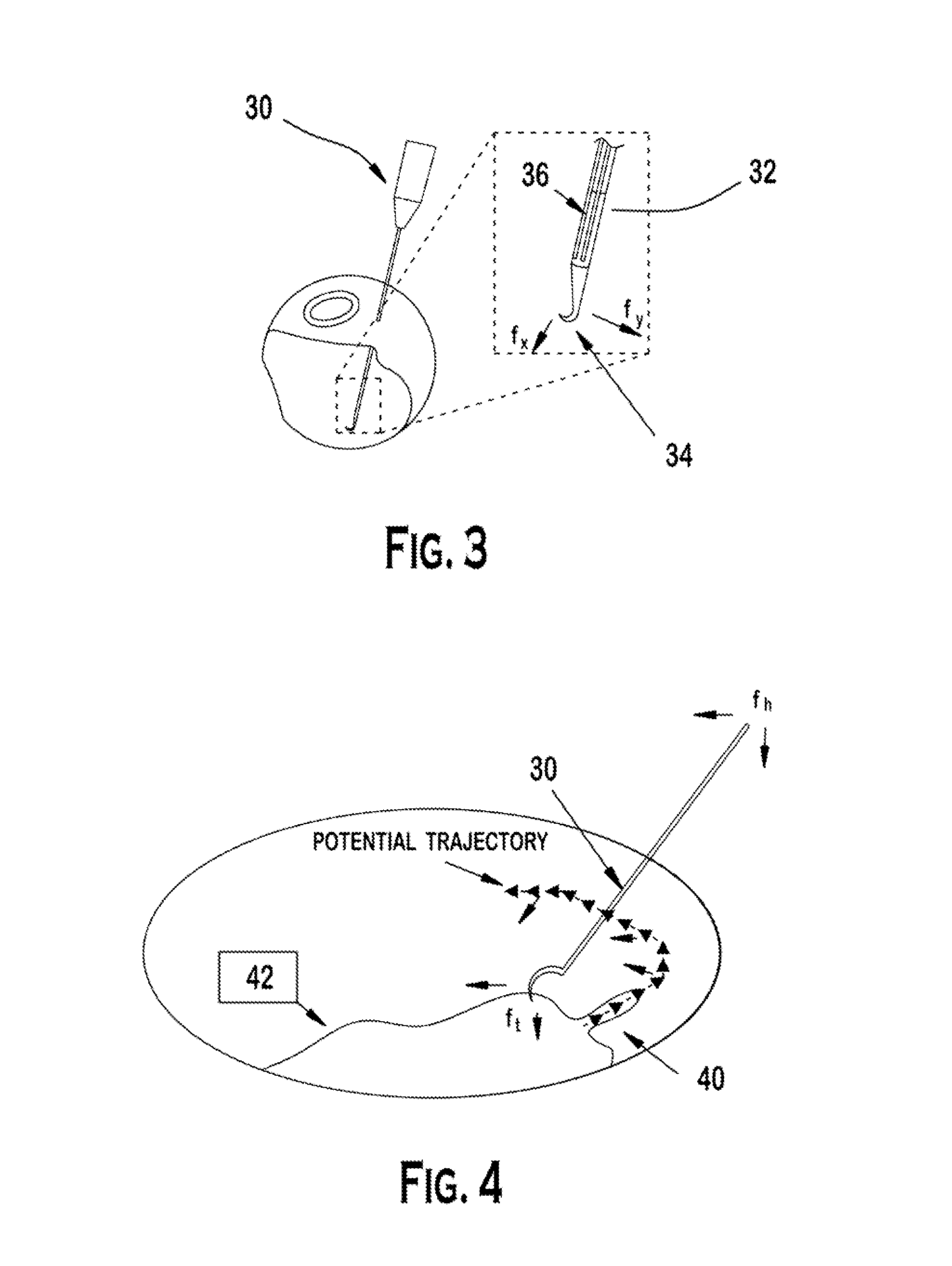Micro-force guided cooperative control for surgical manipulation of delicate tissue
a cooperative control and micro-force technology, applied in the field of micro-force guided cooperative control for surgical manipulation of delicate tissue, can solve the problems of further challenge in surgical performance, difficulty in performing micron scale motor tasks, and retinal microsurgery
- Summary
- Abstract
- Description
- Claims
- Application Information
AI Technical Summary
Benefits of technology
Problems solved by technology
Method used
Image
Examples
example
[0043]The following Example has been included to provide guidance to one of ordinary skill in the art for practicing representative embodiments of the presently disclosed subject matter. In light of the present disclosure and the general level of skill in the art, those of skill can appreciate that the following Example is intended to be exemplary only and that numerous changes, modifications, and alterations can be employed without departing from the scope of the presently disclosed subject matter. The following Example is offered by way of illustration and not by way of limitation.
[0044]A series of experiments were preformed on the inner shell membrane of raw chicken eggs with the aim of identifying and controlling the forces associated with peeling operations. The first set of experiments was carried out to assess the capability of the system in tissue resistance forces through controlled motion and high resolution sensing. Attaching the surgical hook to the sample tissue, a desi...
PUM
 Login to View More
Login to View More Abstract
Description
Claims
Application Information
 Login to View More
Login to View More - R&D
- Intellectual Property
- Life Sciences
- Materials
- Tech Scout
- Unparalleled Data Quality
- Higher Quality Content
- 60% Fewer Hallucinations
Browse by: Latest US Patents, China's latest patents, Technical Efficacy Thesaurus, Application Domain, Technology Topic, Popular Technical Reports.
© 2025 PatSnap. All rights reserved.Legal|Privacy policy|Modern Slavery Act Transparency Statement|Sitemap|About US| Contact US: help@patsnap.com



